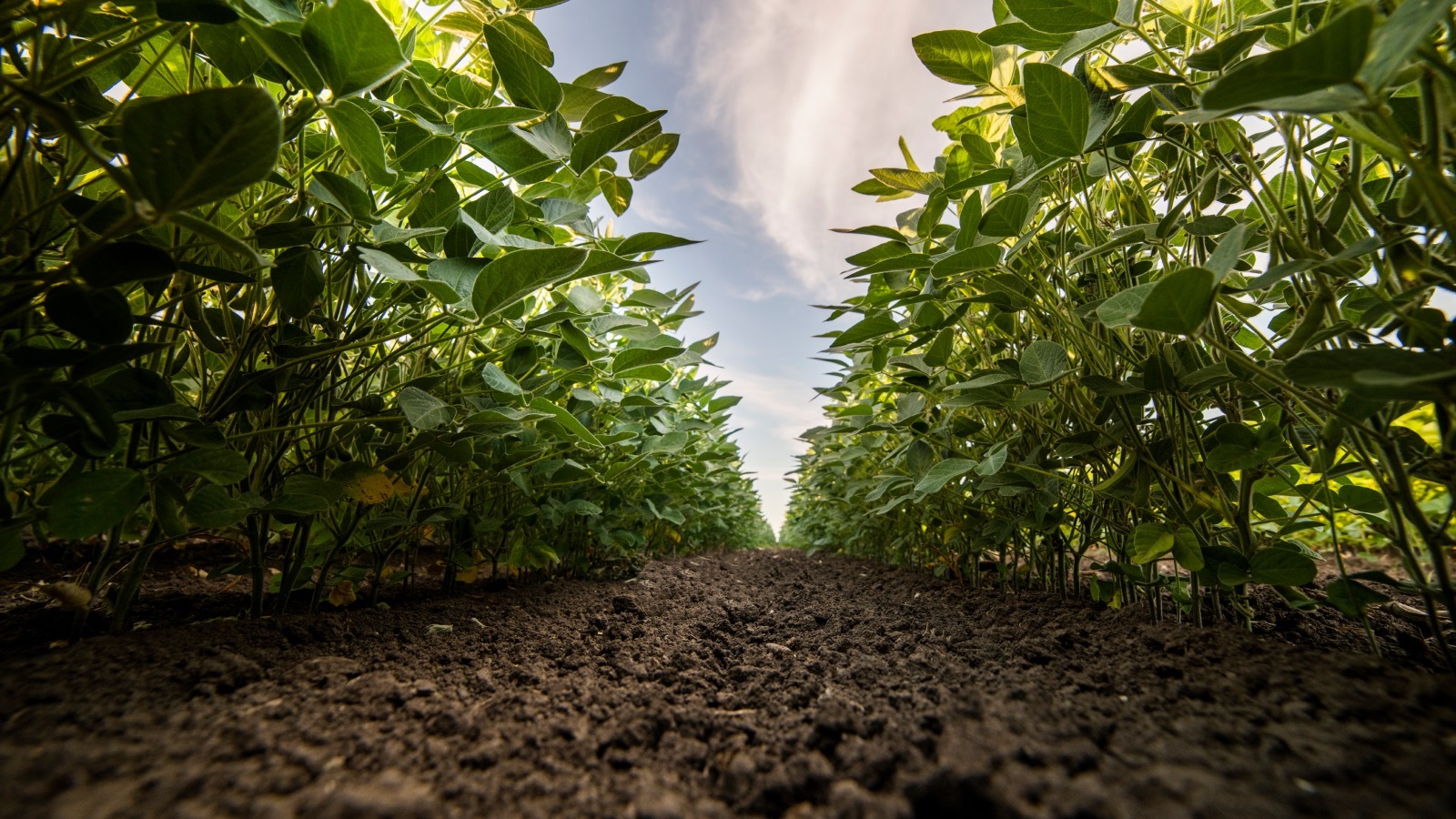Liz Carlisle is an assistant professor in the Environmental Studies Program at the University of California, Santa Barbara and a 2020 Grist Fixer. She is the author of three books about regenerative agriculture, most recently Healing Grounds: Climate, Justice, and the Deep Roots of Regenerative Farming.
In recent years, carbon has become a handy shorthand for climate. Our national lexicon includes “carbon footprints” and “carbon budgets”; we environmental advocates speak of going carbon-neutral or building a low-carbon economy. Measuring carbon molecules has also spread to agriculture as many producers and brands enthusiastically embrace “carbon farming.”
Farmers typically get paid for what they take out of the soil, namely crops like corn or lettuce. But some regenerative agriculture advocates are asking whether farmers also should be paid for what they put back in. By embracing practices like planting soil-building cover crops, spreading compost, and reducing tillage, farmers can gradually build up the amount of carbon in their land. More carbon underground means less carbon dioxide in the atmosphere, thus mitigating the impact of climate change.
Carbon farming has burst into the mainstream over the past decade. General Mills recently announced an initiative to monitor soil carbon across 175 million acres of farmland in North America, South America, and Europe, with the goal of achieving net-zero emissions by 2050. Meanwhile, the 4 per 1000 soil carbon initiative has garnered vocal support from Prince Charles after launching at the 21st United Nations’ annual Conference of the Parties on climate change. And the critically acclaimed documentaries Biggest Little Farm and Kiss the Ground have legions of gardeners enthusiastically carbon-farming their yards.
The notion that everything we do has a carbon benefit or cost has been an effective way to raise awareness of our impact on climate. But as this narrative is translated into federal agriculture policy and public funds are committed toward carbon programs, there’s the danger of too narrow a focus — bean counting one microscopic element rather than supporting healthy farm ecosystems.
The thing about carbon is that there’s nothing particularly valuable about simply getting it into the ground. To make a difference for the climate, much of that carbon has to stay underground for a long time. And tracking carbon at the molecular level is a nascent science based on emerging technology. There is uncertainty about whether what we are measuring is in fact going to lead to long-term carbon storage. We absolutely should invest in research that will improve our understanding of soil-carbon dynamics, but few scientists feel confident enough with their current tools for measuring carbon at the farm level to stake federal climate policy on these numbers alone.
But we know a lot about farm ecosystems, and we know that healthy ecosystems keep carbon and other greenhouse gasses in balance. Just like natural ecosystems, farms rely on plant roots to build up healthy soils. These roots feed the microbes and fungi that deliver carbon into the soil and continuously cycle nutrients to support new growth. Industrial farming typically leaves soils bare for long periods, denying roots the chance to do their work. When farmers plant diverse mixtures of crops, they can keep roots in the ground year round, building up carbon and recycling nutrients for next year’s crop. In fact, the carbon that plants inject into the soil is five times more likely to remain stable than carbon applied aboveground through compost or mulch.
Ideally, a portion of these plants are long-lived perennials like trees and berry bushes. But even farmers who grow only annual crops can keep roots in the ground in the offseason by planting soil-building cover crops like bell beans or rye. These can offset 8 percent of greenhouse gas emissions from agriculture, scientists estimate. Cover crops also make soil more fertile, making farms less reliant on fossil fuel-based nitrogen fertilizer. This is a big deal from a climate perspective, since about half of the commercial fertilizer applied on U.S. farms runs off into the watershed or escapes into the atmosphere as the potent greenhouse gas nitrous oxide. (For those keeping score: Nitrous oxide causes 300 times as much warming, molecule for molecule, as carbon dioxide).
The thing about carbon is that there’s nothing particularly valuable about simply getting it into the ground. To make a difference for the climate, much of that carbon has to stay underground for a long time.
The key to ecologically managed farms requires more than one technique. And as farmers are quick to tell you, they are not merely implementing isolated practices. They are restoring the farm ecosystem so it functions much like the surrounding environment, whether it’s prairie, forest, or wetland. Perhaps the most important thing these farms are restoring are their communities’ reciprocal relationships with land.
As a little girl listening to my grandmother’s stories about losing the family farm during the Dust Bowl, I yearned to fix the damage her father unwittingly did to those prairie soils with a heavy moldboard plow, a piece of equipment common in the early 1900s that tore up the land and released gigatons of carbon while tilling. Since embarking on a career as a writer and researcher a dozen years ago, I’ve spoken with thousands of farmers from California to Montana to Iowa, all of whom are looking for ways to transform agriculture from a climate problem to a climate solution.
At first, I was excited by the idea of carbon markets and carbon credits. Why shouldn’t farmers get paid for fighting climate change? But then I realized that many of the people most committed to a climate-positive food system — Indigenous, Black, Latino and Asian-American communities with longstanding traditions of regenerative agriculture — would have less access to these credits and markets. In the United States, people of color make up about 60 percent of the agricultural labor force, yet this population owns just 2 percent of U.S. agricultural land.
Meanwhile, regenerative agricultural techniques that draw down carbon are rooted in these communities’ ancestral knowledge. Regenerative grazing? That’s based on the bison food system of Indigenous North Americans, whose carefully timed fires amplified the beneficial impact of the native herbivores’ selective grazing patterns. Agroforestry? That has a long history throughout the Black diaspora and among Indigenous peoples in forested areas throughout the world. Crop diversity? The polyculture of corn, beans, and squash has been a staple of Mesoamerican agriculture for millennia. And cover-cropping — like composting and mulching — was introduced to the organic farming movement by two scientists who learned about it from smallholder farmers in India, China, Japan, and Korea.
Many communities are working to revitalize the regenerative farming practices of their heritages. Soul Fire Farm, for instance, is training thousands of farmers each year. But in order for these farmers to sequester significant amounts of carbon, they need secure land tenure, access to capital and markets to sell their goods, technical assistance, equipment, and infrastructure — all the things that have been provided to white farmers but systematically denied to nonwhite farmers for decades. If we want farmers to keep roots in the ground over multiple years, we need to make it possible for them to put down roots themselves.
There are promising signals that policymakers are beginning to take a more holistic approach to climate solutions in agriculture. Biden’s Build Back Better legislation included $27 billion for conservation programs that support farmers in restoring whole farm ecosystems and set aside more than $2 billion for technical assistance. Senator Cory Booker and Democratic colleagues also introduced the Justice for Black Farmers Act, which provides land grants of up to 160 acres to existing and aspiring Black farmers.
But Build Back Better stalled in the Senate, and while the 2021 American Rescue Plan took up one provision of the Justice for Black Farmers Act — $4 billion in debt relief for farmers of color — lawsuits by white farmers have tied it up in court. As policymakers and advocates look ahead to the 2023 Farm Bill, some see a golden opportunity to finally push through the large-scale public investments and transformational social policy necessary to significantly improve climate performance in agriculture. Others, weary of the political battle, are quietly pushing for a cheaper approach that would rely more heavily on the financial sector and agribusiness to create private markets for trading carbon credits.
But we need only look to recent reforestation projects to see how badly carbon markets like this can go awry. There is no system in place to verify the carbon-storage benefits claimed by those selling credits, making fraud and greenwashing not only possible but probable. And if we settle for carbon markets alone, there remains a very high likelihood that money will be invested to inject carbon into the soil only for the land to change hands and for a new owner to plow it up and send it all back up into the atmosphere.
Agriculture has enormous potential to reduce emissions, and the good news is that healthier farm ecosystems bolster rural economies and food security. But if we try to take the cheap, easy path — voluntary carbon markets only — we will get none of those benefits. If we want to fix what’s broken with farming and the climate, we need to address these problems at their roots.
The views expressed here reflect those of the author.
Fix is committed to publishing a diversity of voices, and we want to hear from you. Got a bold idea, fresh perspective, or insightful news analysis? Send a draft, along with a note about who you are, to opinions@grist.org.




